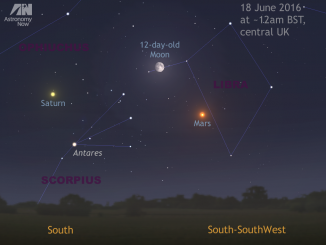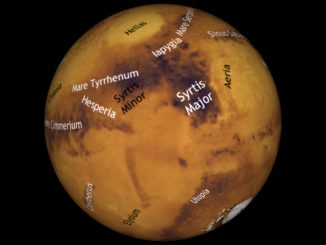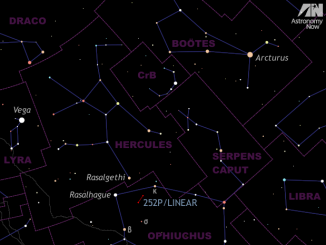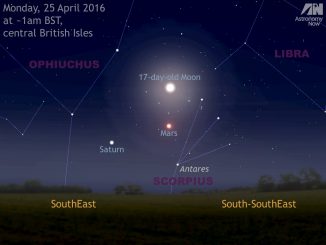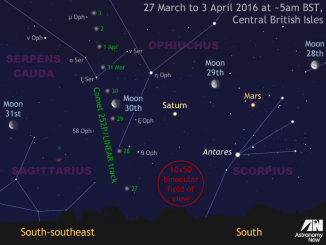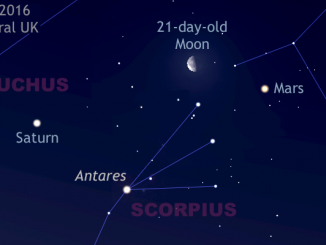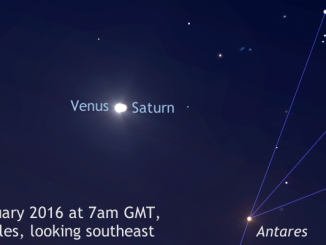
See the Moon meet Mars and Saturn
In the bright evening twilight of 14, 15 and 16 July, observers in the British Isles and Western Europe can see the waxing gibbous Moon pass by Mars, first-magnitude star Antares in Scorpius, then Saturn. This series of conjunctions occurs very low in the southern sky for UK-based astronomers, while Australasian observers are ideally placed to view the spectacle almost overhead.


